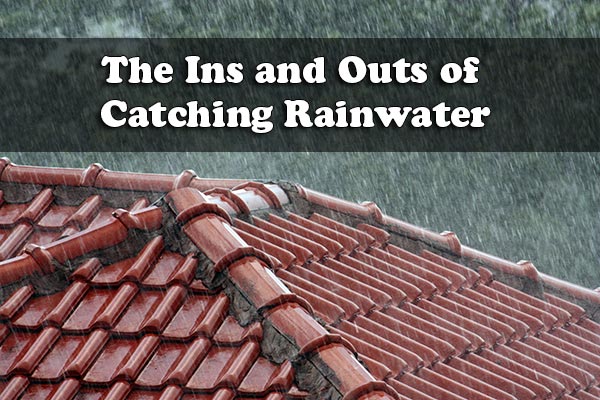The Ins and Outs of Catching Rainwater

Make sure to like Living Green and Frugally on Facebook, Shop at Amazon to help support my site and explore our PINTEREST BOARDS for innovative ways you can become self-sufficient.
Collecting rainwater might sound simple—just funnel water from a surface into a tank, right? While the basic idea is straightforward, the reality of catching and storing rainwater safely for indoor use is more complex. If you’re thinking about using rainwater for cooking, cleaning, or drinking, it’s essential to understand a few critical elements to make sure your water is clean, safe, and stored properly.
When collecting rainwater for garden use, a basic setup that captures water from your roof into a container is generally enough. However, for home use, additional steps are crucial to avoid contamination and maintain water quality. Proper filtration is the most obvious requirement, but there are several other considerations that often get overlooked. From tank placement to preventing bacterial contamination, creating a safe rainwater collection system can require more planning and preparation than expected.
Key Considerations for a Safe Rainwater Collection System:
- Effective Filtration: Without a reliable filtration system, rainwater can contain contaminants like bacteria, chemicals, and dirt particles. Ensure you have a multi-stage filtration system if you plan to use the water for cooking or drinking.
- Secure Holding Tank: Positioning your tank in a stable, secure area is crucial. The weight of collected water can cause shifts, and improper placement can lead to tank damage or even tipping.
- Sunlight Protection: Exposing water to direct sunlight promotes algae growth. Use a shaded or covered area for your tank to minimize sunlight exposure, keeping the water clean and algae-free.
- Animal Interference Prevention: To keep your rainwater free from bacteria, ensure your system prevents animals from accessing it. Even a small bird or rodent can contaminate your entire supply.
- Freeze Prevention: If you live in a region with cold winters, consider freeze-proofing your system to prevent the tank from cracking and to ensure a steady supply of water year-round.
Benefits of Catching and Using Rainwater:
- Sustainability – Harvesting rainwater reduces demand on municipal supplies, conserving a valuable natural resource.
- Cost Savings – Once set up, a rainwater system can significantly cut down on water bills, particularly if you use it for multiple household tasks.
- Independence – Relying on your own rainwater collection for daily needs offers more self-sufficiency and less dependency on external sources.
- Healthier Plants – For gardening, rainwater is free of chemicals typically found in tap water, making it ideal for plants.
Ready to dive into the details? This guide covers everything you need to know about catching, storing, and using rainwater safely. Whether you’re a beginner or looking to enhance your existing system, click the link to explore the full article on The Ins and Outs of Catching Rainwater and start harvesting your own water like a pro!